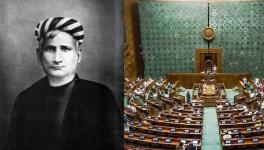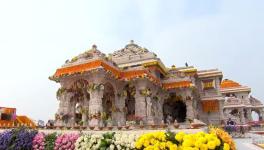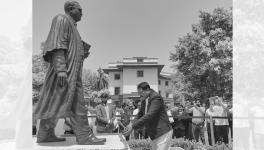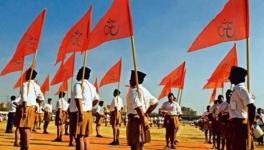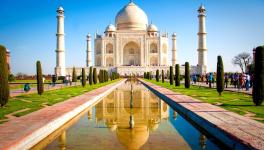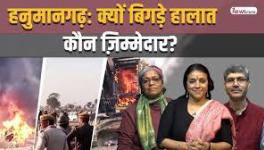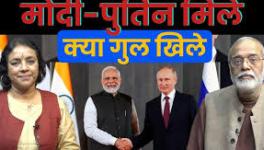When an Assassin Fascinates a People
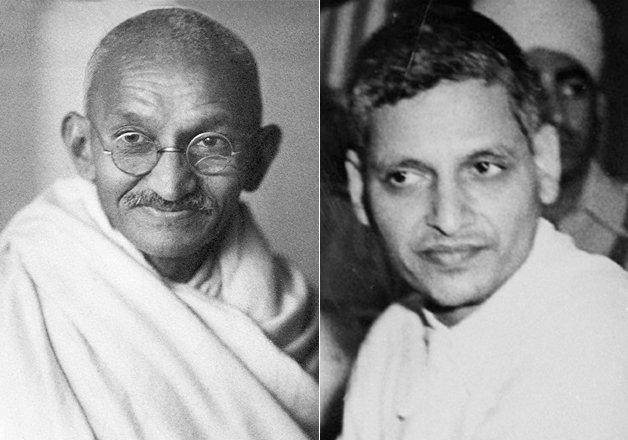
Image Courtesy: India TV News
For now, the invidious project of the Hindu Mahasabha to set up a Nathuram Godse Gyan Shala in Gwalior has been shelved. Perhaps what terminated the ill-conceived venture was the sheer anachronism: while the country would mark Gandhi’s 73rd death anniversary on 30 January, one section would be found singing paens to his assassin, Nathuram Godse. It would only have served to remind people of how an unarmed man was shot down on his way to a prayer meeting.
This killing was Godse’s so-called contribution and, according to leaders of the Mahasabha, marked his patriotism. The same Hindu Mahasabha has already launched a “Godse workshop”, where the members exhort Indians to “strive to follow his path”. It was also instrumental in installing his statue in the city which had invited opprobrium.
The killing of Gandhi has been shown to be part of an elaborate conspiracy hatched by the higher-ups in the Hindutva supremacist forces. Remembrance of Godse would have been a reminder of the five attempts on Gandhi’s life since the mid-thirties that involved Hindutva forces. There was even a sixth attempt, according to Chunnibhai Vaidya, a Gandhian from Gujarat. Justice Jinvanlal Kapur, who was entrusted with examining the conspiracy to assassinate the Mahatma had concluded in 1969, “All these facts taken together were destructive of any theory other than the conspiracy to murder by Savarkar and his group.”
Jawaharlal Nehru, the first prime minister, Gandhi’s sons Ramdas and Manilal and many Gandhians had requested clemency for his assassins on the ground that Gandhi had opposed the death penalty. To give him the death penalty would have made a travesty of Gandhi’s own ideas, they had said.
Yet, to see the scale of the “grand inauguration” of the Gyan Shala at the Mahasabha’s office in Gwalior is to realise that the administration closed down their project just as a face-saver. In fact, it was compelled to act after it came under attack from Opposition parties for its casual attitude towards those who seek to glorify Gandhi’s killers.
Secondly, the administration took action against the Mahasabha under the Epidemic Act, which prohibits large gatherings and not for “spreading disaffection between communities” or glorifying the killers of Gandhi, which would have invited tougher punishment.
Thirdly, no FIRs have been filed against the organisers of this project, leaving open the possibility that they can engage in similar mischief later.
Would the administration have acted in a similarly cavalier way had the assassin not been a Hindu? Would supporters of Beant Singh, who killed former prime minister Indira Gandhi, or of Jarnail Singh Bhindranwale have been handled with kid gloves too?
The Hindu Mahasabha’s planned project came to light close on the heels of another controversial remark from the Sangh supremo Mohan Bhagwat. He had just declared Hindus as “automatic patriots”, thus inadvertently bringing other communities under the glare of suspicion.
India, as the present-day custodians of our democracy proclaim, is on the precipice of a transformation. A pertinent expression of this transformation is the continuing effort to give a makeover to the image of Godse. From a murderer, conspirator, and terrorist, he has been characterised as a “martyr” who supposedly “deserves” a temple and a “centre of learning” and workshops where youth would be made to discuss him and search avenues to follow in his footsteps.
After the “successful” run of the Marathi play, “Me Nathuram Boltoy—I Nathuram, Speak”, plans are afoot to make a movie on him, supposedly to communicate his “viewpoint”. With the BJP-RSS in power, even the film certification (censor) board is populated by right-wing people, so one can presume it will be released to the public. With an ambience that is more prone to illiberal ideas, one can prophesy that it will have a good run.
The rationale behind the continued glorification of Godse, and why the government turns a blind eye to it, is that it creates legitimacy for the idea of a Hindu rashtra, which he espoused. It sends a message to the core Hindutva constituency that the State is willing to carve out a Hindu State to replace secular and democratic India—that they should not get confused by the democratic pretensions of the swayamsevaks and pracharaks who are currently in power.
The Hindutva Right’s lame attempts to co-opt Gandhi and its continued silence over the conspiracy to kill him also facilitates the sanitisation of an icon. Misrepresenting Gandhi raises no alarm in the Hindutva circles and in fact helps legitimise the exclusivist agenda of the Sangh.
The fact that Godse’s changed image has any supporters at all in India should invite all Indians to introspect on how we have imagined secularism. When reduced to “sarv-dharm sambhav—all religions are equal”—secularism comes up short of expectations. We must practice secularism in a way that separates religion from the state.
There is no denying we lack a social foundation for such a secularism. Perhaps the emphasis was on maintaining secularity of the state while forgetting the secularisation of society. The emphasis on the progressive political and economic movements neglected to intervene in the sociocultural arena.
Two years back, the Hindu Mahasabha literally reenacted the assassination of Gandhi in Aligarh. Its members pumped bullets into an effigy of Gandhi, even ensuring that fake blood oozed from the “victim”. Cases were lodged against thirteen people—including their leader Pooja Shakuni Pandey—for this act.
Commenting on the episode, Rohit Kumar, an educator, raised an important point: “This is Hindutva’s heyday. The RSS reigns supreme. Gandhi has officially been co-opted and reduced to a pair of glasses and a broom, so why so much hatred for a man who is dead...?” He added, “It looks like hate, but could it actually be fear?”
Behavioural psychologists will tell you that hatred and fear are two sides of the same coin. One follows the other, as night follows dusk. Could it be that the spirit of the Mahatma is alive and well, walking the streets and alleys of India? Satya and ahimsa were his weapons to wage war. Is it possible that over the past five years, every time Hindutva organisations and leaders have seen those two most powerful of all weapons in action, they have seen the specter of Gandhi?
The author is a freelance journalist. The views are personal.
Get the latest reports & analysis with people's perspective on Protests, movements & deep analytical videos, discussions of the current affairs in your Telegram app. Subscribe to NewsClick's Telegram channel & get Real-Time updates on stories, as they get published on our website.









